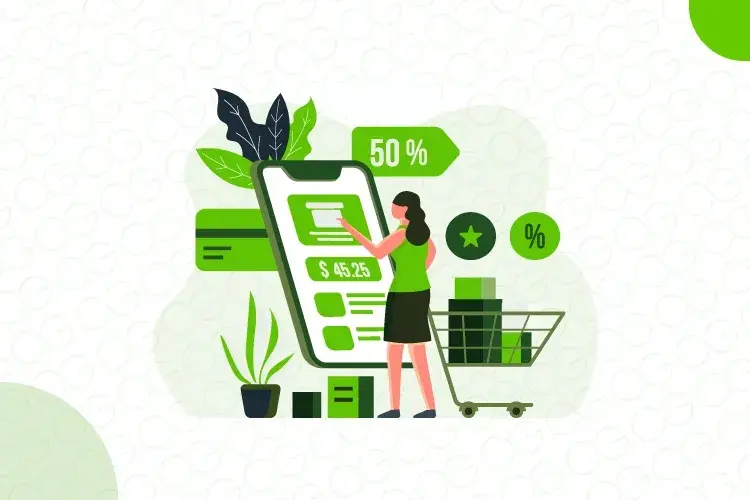The Role of ERP in Managing Omnichannel Pricing for Retail Chains
Shoppers flit between online stores, apps, social media shops, and brick-and-mortar outlets and expect to find the same prices everywhere. 73% of shoppers now use multiple channels in their buying journey. For retailers, this means pricing decisions made for one channel instantly ripple across others. Any mismatch can erode customer confidence and loyalty.
Yet aligning prices across e‑commerce sites, marketplaces, and hundreds of stores is notoriously complex. Fluctuating supplier costs, region‑specific taxes, promotions, and even marketplace algorithms can cause inadvertent gaps.
An agile Enterprise Resource Planning (ERP) system is therefore indispensable for retailers today. An ERP can serve as the single source of truth for pricing strategy, centralizing product and cost data and automating price updates across channels in real time.
Let’s break down how modern ERPs power each facet of omnichannel pricing strategy in a retail chain, from core pricing rules and market data integration to cross‑channel synchronization, tax compliance, and analytics.
The Complexities of Managing Omnichannel Pricing
Retail chains operate in a blended marketplace. Shoppers compare prices on Amazon, then click through a Google ad, and later walk into a store for the same brand. This blurring of channels means traditional pricing silos do not work anymore. If prices don’t match in store and on the website, customers take notice and lose trust.
Each channel has its own cost drivers. In‑store prices must cover rent and staffing, while online listings must factor in fulfilment fees, returns, and marketplace commissions. Add complex season‑long promotions, region‑specific taxes, and feed costs from multiple vendors, and things get complicated fast.
Outdated approaches like spreadsheets or isolated POS systems are doomed to fail. A centralized ERP embeds pricing logic into daily operations. It unifies product master data (cost, list price, margin targets, category, etc.) and applies global pricing rules at scale. Any adjustment propagates through the ERP and onto every channel in real time.
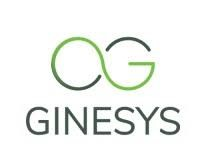
Centralize your pricing with Ginesys ERP and eliminate costly mismatches across stores, marketplaces, and web platforms.
Pricing Dynamics Across Stores, Apps, and Marketplaces
Maintaining coherent pricing across dozens of online touchpoints and physical outlets is inherently complex. Each channel faces different tax rules, promotional calendars, and competitive pressures.
Goods sold in one state may incur different sales taxes or import duties than in another. An online marketplace might demand its own promotional discount or an external pricing algorithm (like Amazon’s dynamic repricer) may be adjusting prices every minute.
If a price drops online, customers expect their mobile shopping app or in-store register to reflect this instantly. Manually syncing these changes across systems is nearly impossible. It’s yet another challenge when retailers rely on separate systems for ERP, e‑commerce, and POS.
An ERP designed for omnichannel retail acts as a hub for all pricing logic and data. It handles:
- Tax and duty differences: Modern ERP systems can automatically calculate location‑based taxes, tariffs, and duties on each sale. An omnichannel ERP will apply the correct state or regional tax for an online order based on customer location or add import duties on globally sourced goods. This means local tax rates and cross-border fees feed directly into the final price.
- Channel promotions and rules: The ERP can store promotion schedules and apply them uniformly or selectively (online vs in-store). It can enforce minimum advertised price (MAP) policies required by suppliers.
- Dynamic marketplace factors: If prices on Amazon or Flipkart change due to their own demand-driven algorithms, an integrated ERP/OMS can ingest those signals via APIs or retail‑intelligence platforms and recommend adjustments for the retailer’s listed price.
- Instant updates: By providing one central pricing platform, the ERP can push updates via APIs or middleware to POS terminals, e‑commerce sites, and marketplace feeds. This two‑way sync means a price change anywhere or even in headquarters reflects everywhere nearly instantly.
- Auditability: A good ERP keeps complete audit logs of every price change. If a campaign causes a price error, managers can roll back changes or analyze what went wrong.
How ERP Systems Anchor Strategic Pricing Decisions
At the heart of ERP‑based pricing is master data management. The ERP holds a unified product catalogue where each item’s attributes are meticulously recorded. This typically includes the cost of goods, target margin, category, style, and any relevant logistic costs.
Since every price calculation ultimately springs from these numbers, maintaining clean, centralized data is vital.
Because the ERP knows your total landed cost, it can automatically compute an appropriate selling price or markup. Many ERPs allow you to set rules like “Price = Cost × (1 + Margin %)” or include volume‑tier pricing (e.g. quantity break discounts) and geo‑markups (e.g. charging more in regions with higher taxes).
A retailer could configure the ERP so that if an online order is shipped to a high‑tax state, the system automatically factors in a slight markup to preserve margin. Or, if a store group runs a buy‑two‑get‑one promotion, the ERP’s pricing engine can apply the correct bundle discount based on the bill‑of‑materials for that promotion.
Behind the scenes, many suppliers push their price lists into the ERP as well. A landed cost calculation in the ERP will include the supplier invoice price, plus added costs like freight, customs duties, and insurance. This ensures that when a buyer inputs an order, the ERP updates the product cost and thus the future sales price accordingly.
ERP pricing capabilities include:
- Unified product master: One record per SKU with fields for base cost, default margin, category, etc., ensuring all channels reference the same base data.
- Rule‑based pricing engine: Supports lists, volume discounts, coupons, geographic or channel‑specific markups/markdowns.
- Cost accounting integration: Landed costs and supplier price lists feed directly into pricing calculations.
- Discount and promotion modules: Ability to schedule seasonal campaigns, flash sales, and track customer‑ or channel‑specific discounts.
- Approval workflows: Before any price change goes live, the ERP can enforce approvals to reduce mistakes.
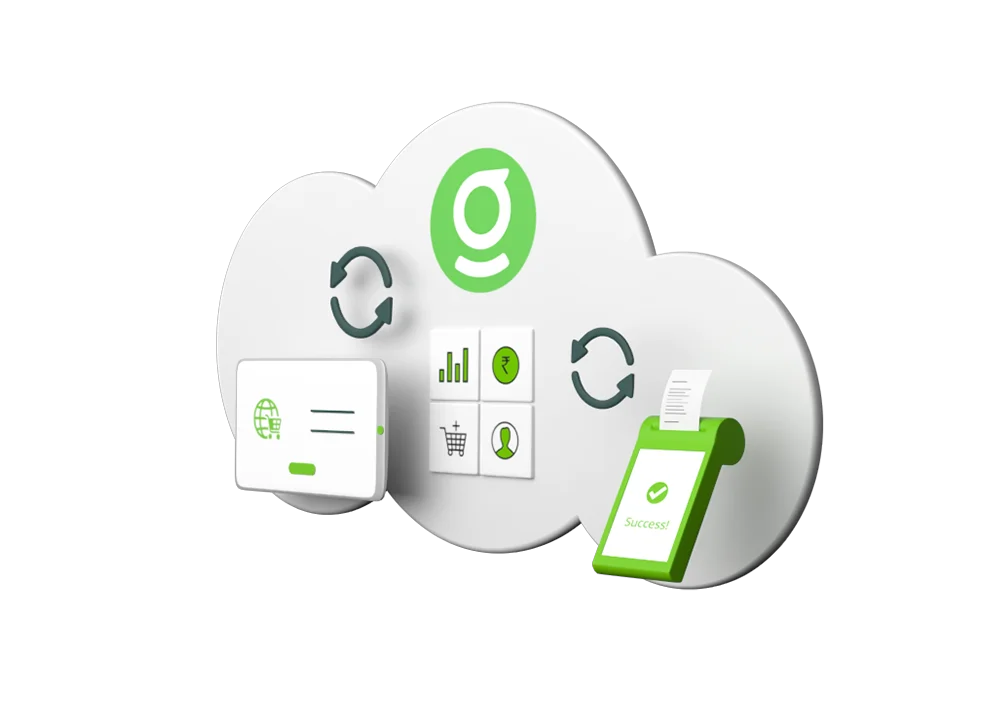
Automate instant price syncs to POS and e-commerce with Ginesys’ ERP integrations.
Using ERP to Decode Market Signals and Adjust Prices Dynamically
Retailers often need to price not just from internal costs but also in line with market realities. Advanced ERP systems can integrate external market intelligence, such as real‑time competitor pricing and demand trends. Some solutions ingest live price feeds from key competitors or marketplaces; others take in sales velocity or customer interest data to adapt pricing.
Armed with this data, ERPs enable dynamic pricing models. Instead of static lists, prices can be automatically adjusted based on triggers.
Some common models are:
- Time‑based: Prices drop as seasonal deadlines approach e.g. markdowns on fall apparel as winter nears.
- Demand response: If customer demand surges for a product, i.e. a high sell‑through rate, the ERP can raise prices to protect the margin. On the other hand, if an item is slow‑moving, the ERP alerts the merchandiser to discount it.
- Inventory‑driven: Overstocked SKUs at a particular warehouse get marked down; low stock items may carry a higher price due to scarcity. The ERP’s inventory module flags such imbalances in real time.
ERP analytics modules support this by offering “what-if” scenario modeling and A/B price testing. A retailer could simulate two different markdown strategies on excess winter coats and compare projected sell-through and profit. Due to its historical sales and margin data, the ERP can forecast potential outcomes.
Many ERPs also incorporate business‑intelligence dashboards that visualize key metrics like price elasticity and promotion lift. Anomalies such as a rapidly dropping margin immediately raise red flags for the pricing team.
If the ERP notices that an item’s gross margin is suddenly below threshold, it can alert managers to correct it. Or it can suggest price adjustments to win the buy box on marketplaces by analyzing data on rival sellers.
Over time, the ERP’s repository of sales versus price data enables increasingly accurate forecasting, helping a retailer adjust prices ahead of demand spikes.
ERP as the Single Source of Truth for Omnichannel Pricing
Once prices are set in the ERP, the next step is synchronizing them everywhere. The ERP functions as the system of record for all pricing changes.
When a price or promotion is approved in the ERP, it publishes these updates across channels using integration technologies, such as:
- APIs and middleware: Price changes flow instantly to e-commerce platforms, marketplaces, and POS systems.
- Two-way syncing: Updates from third-party platforms can be pulled back into the ERP, keeping pricing data in sync across the board.
- Scheduled feeds: For systems that don’t support real-time updates, scheduled syncing ensures web catalogs and in-store systems reflect the latest prices.
Audit trails and rollback features are equally critical. Every price update is time-stamped and tagged to a user and reason, so if a promo is misconfigured or drops pricing too low, managers can reverse it quickly.
Retailers can configure their ERP to automatically trigger updates across:
- All POS terminals across locations
- Online stores and mobile apps
- Marketplaces like Amazon or Flipkart via OMS integration
- Digital or printed catalogs
This automatic, central push means price consistency becomes a non-negotiable default.
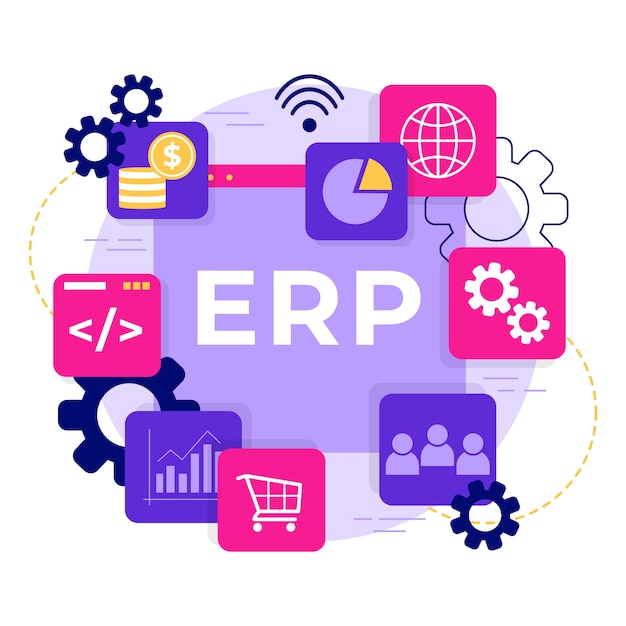
Staying Compliant with Tax, Tariffs, and MAP Policies
Retailers must apply correct taxes, tariffs, and duties based on geography and channel. The best way to go about it is to automate compliance with ERP systems:
- Location‑based taxes: ERPs maintain up‑to‑date tax tables and apply them to transactions in context. If a customer in Delhi orders from the e‑shop, the ERP auto-calculates IGST. If a store sale happens in Bengaluru, the ERP splits CGST/SGST appropriately.
- Regulatory pricing rules: Retailers often face rules like MAP (Minimum Advertised Price) set by brands, or price controls on essentials. Rule engines in the ERP can enforce these. If, for instance, MAP says a brand’s product can’t be advertised below ₹999, the ERP flags any attempt to push it lower.
- Tariff and duty engines: For global supply chains, an ERP’s landed-cost module ensures import/export fees are captured, feeding back into pricing.
- Compliance reporting: Many ERPs can automatically generate audit‑ready reports by channel, location, and tax type. This simplifies filing returns and responding to regulators or marketplace audits, which often require proof that taxes were handled correctly.
Running Smarter Promotions with ERP-Driven Campaign Management
Peak seasons and marketing events rely heavily on promotions. With an ERP, retailers gain a powerful engine to plan, execute, and monitor campaigns across every channel, whether it's Diwali, Black Friday, or a mid-season sale.
Merchandisers can easily schedule offers and have them apply both online and in-store without their intervention. Since the ERP already holds detailed product attributes, it can roll out these deals across entire categories automatically.
Promotion tools within the system also handle mix‑and‑match logic and multibuy offers. The system identifies qualifying combinations and applies the discount at checkout. It can even support more complex setups like loyalty redemptions or channel‑specific coupon codes, ensuring consistent experiences across all customer touchpoints.
Most importantly, the ERP tracks how each campaign performs in real time. It captures sales uplift, ROI, and channel-specific impact, so managers can see whether an email promo spiked online orders, or a window display increased in-store traffic.
Connecting Inventory Health to Dynamic Pricing in Real Time
The two go hand-in-hand, especially in retail environments where SKUs must move swiftly to make room for new collections. A smart ERP system leverages real-time stock visibility to guide pricing decisions across channels and regions.
- Early markdowns for overstocked items: When a product sits idle across warehouses, the ERP flags it as overstocked and can trigger early markdowns before it loses value. This cuts holding costs and frees up space for new seasonal stock.
- Price protection for low-stock SKUs: If an item is nearing stockout, the ERP can pause discounts or suggest price hikes to maximize demand. This preserves margin and protects pricing integrity when supply is tight.
- Buffer pricing tied to safety stock: Retailers often use buffer pricing, where the ERP adjusts prices as inventory moves above or below safety thresholds. This promotes steady stock rotation and avoids end-of-season clearance pressure.
- Regional optimization via multi-location visibility: With real-time data across locations, the ERP spots regional surpluses or shortages. Retailers can fine-tune prices by geography, run local promotions, or shift inventory to higher-demand stores.
- Automated replenishment and markdown triggers: When sales slow, the ERP issues alerts that trigger markdown approval flows or suggest optimal discount percentages based on excess volume, removing the need for steep last-minute discounts.
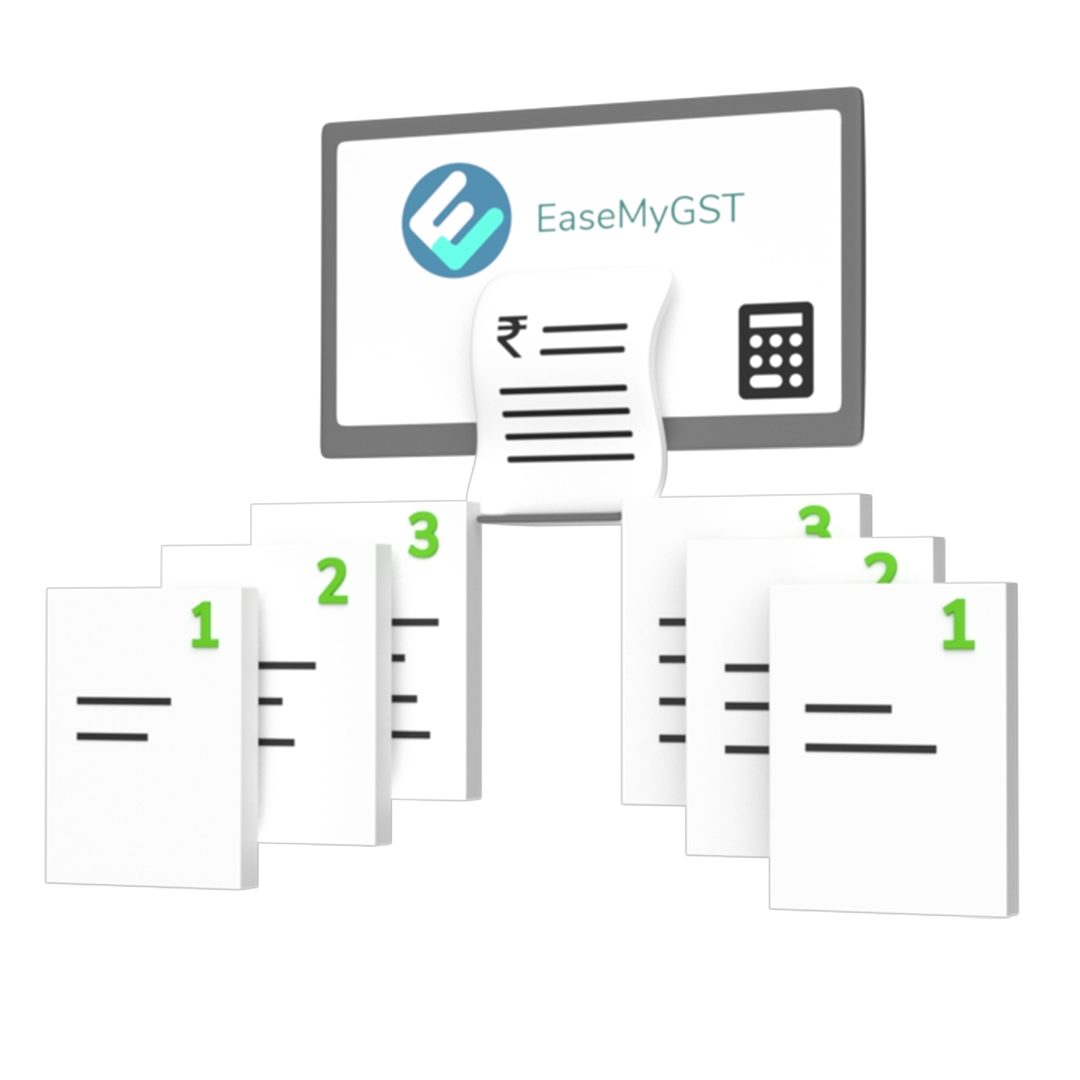
Ensure tax and pricing compliance across geographies with Ginesys’ automated GST handling and MAP enforcement engine.
From Dashboard to Decision: Real-time ERP Insights that Drive Profit
An ERP’s data analytics act as the feedback loop for pricing. Sophisticated ERP dashboards report granular metrics like price elasticity and discount effectiveness. They also highlight anomalies. If margin percentages suddenly shrink due to an erroneously applied discount, it can alert finance teams. Unusual spikes in return rates or coupon abuse are likewise flagged. On the flip side, predictive forecasting tools in the ERP analyze trends and seasonality to advise price moves before demand shifts.
Regular reports can be set up to refresh automatically, so merchandising teams always have the latest figures on campaign performance, inventory days of supply, and channel profitability.
In a single pane, managers view how each pricing lever has affected the bottom line. This real‑time intelligence makes pricing a continually optimized process.
How Ginesys Powers Unified Pricing with its Retail ERP
For retailers navigating omnichannel complexity, Ginesys delivers a unified pricing engine across its ERP, POS, and OMS, connecting processes and ensuring pricing consistency at scale.
One Source of Truth for All Pricing
Ginesys unifies pricing across your retail ecosystem with ERP at the core, integrated seamlessly with its cloud POS and OMS. Any price change automatically synchronizes across all endpoints: physical stores, brand webstores, and marketplaces like Amazon, Flipkart, and Myntra.
Real-Time Price Publishing Across Channels
Thanks to robust API integrations, updates flow instantly from the central ERP to POS terminals, D2C platforms, and marketplace listings. Whether it's a flash sale or a competitor's response, your pricing reflects instantly across all platforms.
Smarter Pricing with Inventory Awareness
Pricing decisions are only as good as the context behind them. Ginesys links pricing to inventory performance using BI dashboards and buffer logic. Identify overstocked SKUs for markdowns or protect margins on fast sellers, all informed by real-time sales and stock velocity.
Automated Tax Handling and Channel Compliance
Ginesys automates GST and regional tax applications at checkout and backend, removing manual errors. It also enforces marketplace-specific pricing rules like MAP and syncs accurately with Amazon, Flipkart, Nykaa, and Shopify, ensuring consistent and compliant pricing.

Accelerate time-to-market for promotions with Ginesys' integrated ERP-OMS system that syncs prices and discounts in real time.
An omnichannel ERP ties together all the threads of pricing – product costs, promotions, taxes, inventory, and analytics – into a single system. This unified ecosystem ensures that from the moment a product enters the catalogue, its price is governed by the same master data and rules, whether it sells on the web or in a physical outlet.
The payoff is clear: coherent omnichannel pricing reduces customer confusion and cart abandonment, eliminates margin‑eroding errors, and builds a trustworthy brand image. Retailers should carefully audit their own pricing complexity – catalog size, channel scope, regional taxes, and promotion plans – and consider whether their current systems can keep up.
Ginesys offers a proven, integrated ERP–OMS–POS suite that takes the guesswork out of modern omnichannel pricing. Schedule a demo and explore how our platform can simplify your retail operations today.
